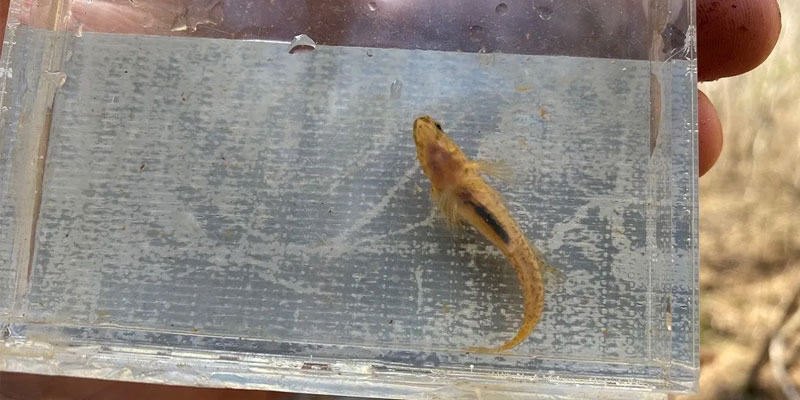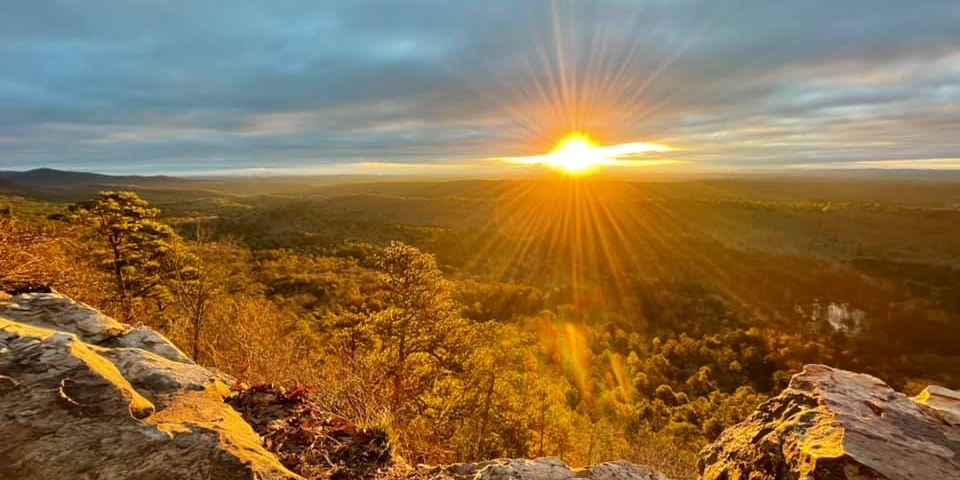A new search in the Bankhead National Forest for a tiny, rare fish found only in Alabama has discovered it living in a spot where no one had seen it before.
The USDA Forest Service, supported by biologists from Alabama Power and the Alabama Department of Environmental Management, went looking last month for the federally endangered rush darter in a remote section of the forest in Winston County.
The rush darter was already known to inhabit small streams near Bankhead National Forest. Then, in 2019, biologists found the fish living in Bankhead, in a tributary of Clear Creek. The latest surveys, completed over three days in March, revisited some of the same locations but added a few more.
The result: Experts found the little fish, which grows to a maximum 2 inches, in a new location in the Clear Creek watershed – expanding the range of confirmed habitat for the species in the national forest.
“It’s always good news when you find more of an endangered species,” said Dylan Shaw, a biologist with Alabama Power.
Bankhead National Forest Wildlife Biologist Allison Cochran credits the ongoing Forest Service-Alabama Power partnership for a number of important accomplishments related to aquatic species surveys and management.
“Our capacity to survey for and conserve rare species exponentially increases when we have strong working partnerships,” Cochran said. “We are learning more every year about the rush darter’s habitat and how we can incorporate it in our management efforts. It has been exciting for all of the partners to finally find rush darter on Bankhead!”
The rush darter is known to survive in only a few locations – all within Alabama. While not much is known about the dun-colored fish, it prefers to live, as its name implies, in grass-like rushes and vegetation found along the edges of small, clear streams.
Spring is the ideal time for surveyors to go darter-detecting – when showers create seasonal pools near creeks where rush darters are suspected of breeding. The darters are believed to travel back and forth, from creek to pool, to spawn.
Shaw said it’s unusual to find more than a few darters during surveys. But the more locations that scientists identify as rush darter habitat, the more they learn about the species. That knowledge also can inform future decisions about where to look for more darters, and how to protect the places where they exist.
Alabama Power has partnered with the Forest Service to perform surveys and help protect several rare and important species in the Bankhead National Forest in northwest Alabama. In addition to the rush darter, the company has conducted or participated in surveys supporting the federally endangered Black Warrior waterdog, Indiana bat and the federally threatened flattened musk turtle.
Alabama’s national forests encompass about 668,000 acres of public land, divided into four separate forests – Bankhead, Conecuh, Talladega and Tuskegee. The forests span 17 counties in northwest, northeast, west-central, east-central and southern Alabama that are permanent or transitory homes to about 850 species of birds, mammals, reptiles, amphibians and fishes. Other endangered species that live in Alabama’s national forests include the red-cockaded woodpecker and several freshwater mussels. The national forests in Alabama also contain three Wilderness Areas totaling more than 42,000 acres, where human activities are further restricted to preserve the unique, natural character of the landscape.
Learn more about Alabama Power’s efforts to help sustain Alabama’s unique environment and preserve the state’s rare plants and animals at www.alabamapower.com.
(Courtesy of Alabama NewsCenter)













